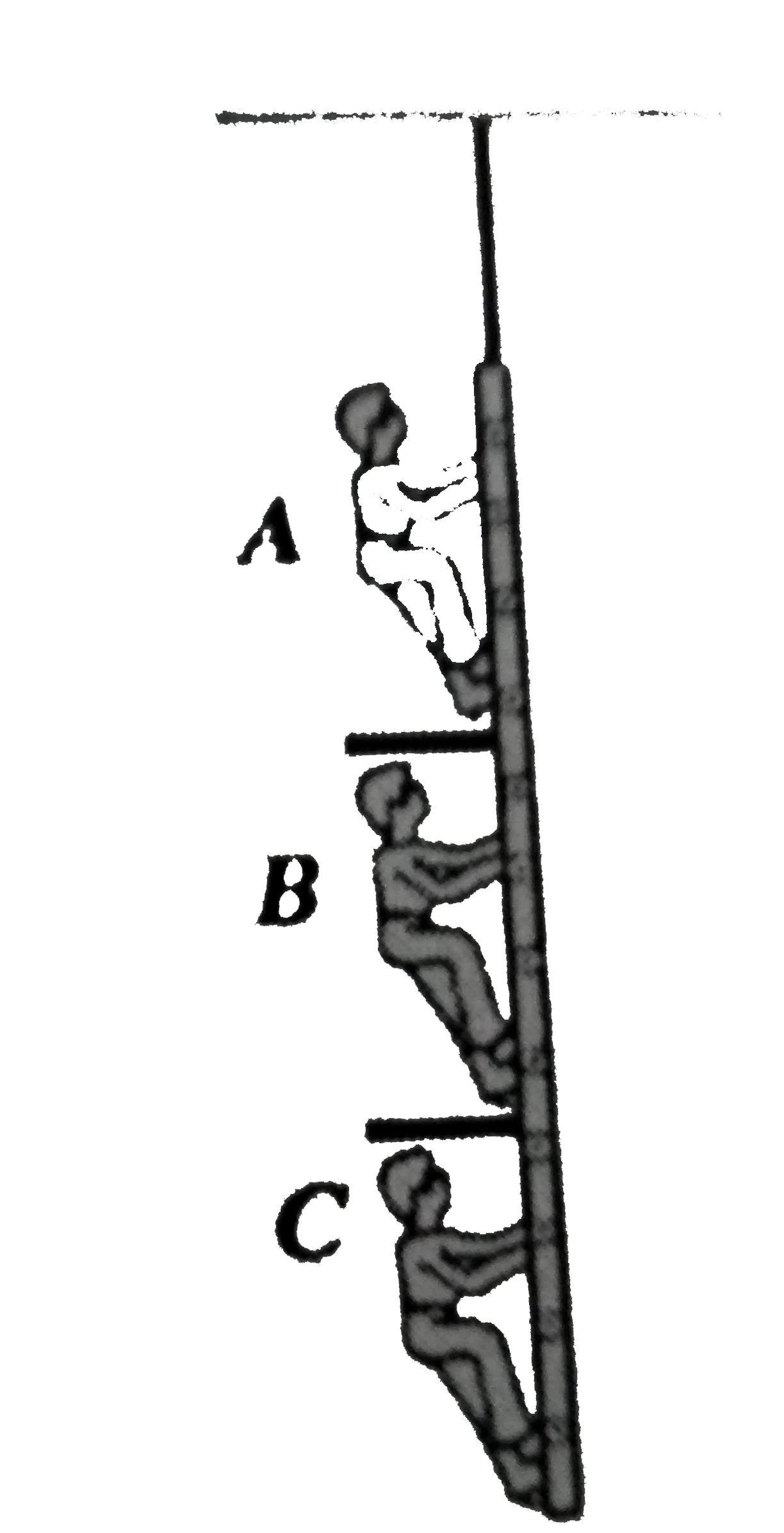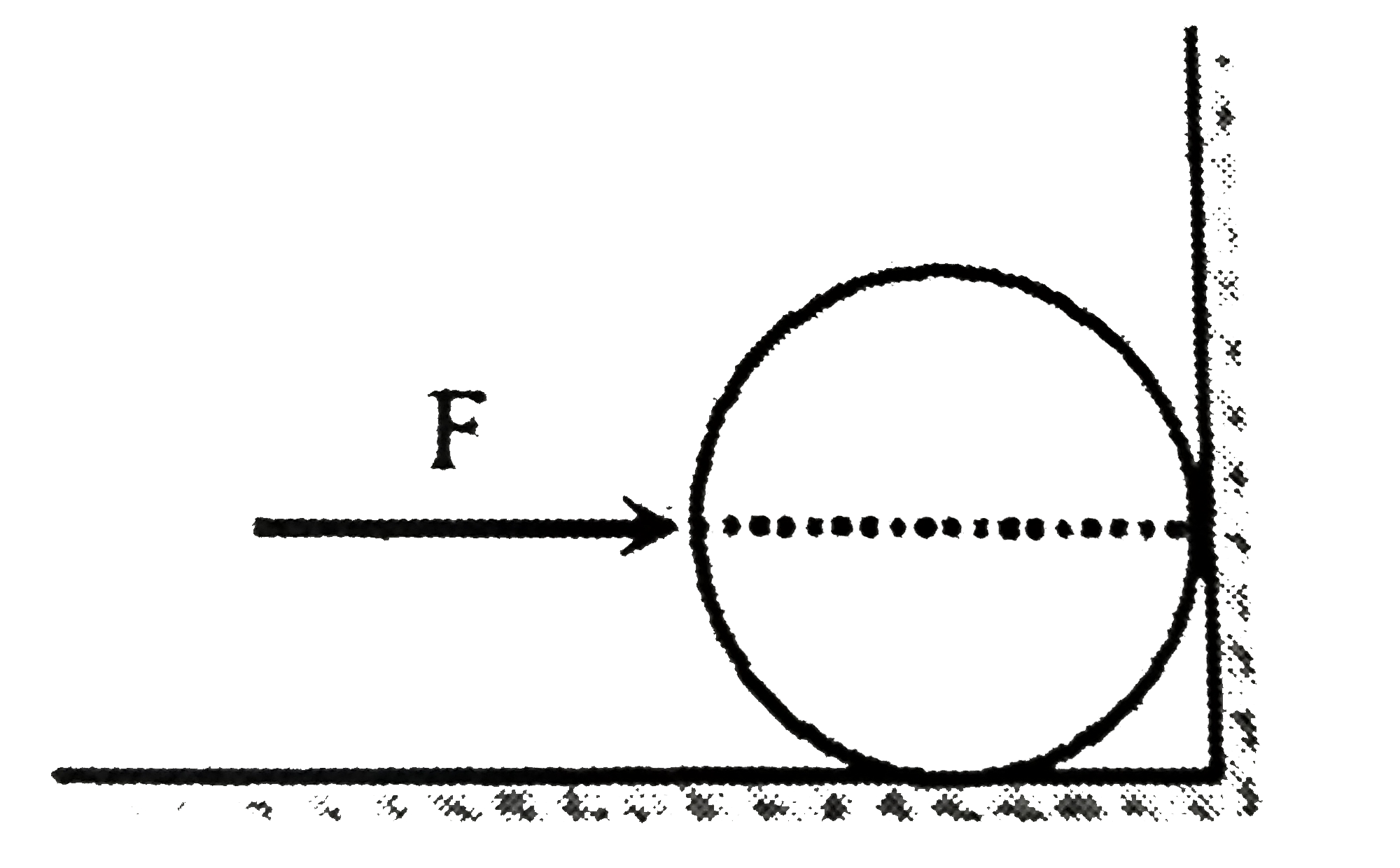A 1kg block B rests as shown on a bracket A of same mass. Constant forces F1=20N and F2=8N start to act at time t=0 when the distance of block B from pulley is 50cm. Time when block B reaches the pulley is.( Assume that friction is absent every where. Pulley and string are light.
 Solution in Gujrati
Solution in Gujrati
The correct Answer is:0.5s
Step by step video & image solution for A 1kg block B rests as shown on a bracket A of same mass. Constant forces F_(1)=20N and F_(2)=8N start to act at time t=0 when the distance of block B from pulley is 50cm. Time when block B reaches the pulley is .( Assume that friction is absent every where. Pulley and string are light. by Physics experts to help you in doubts & scoring excellent marks in Class 12 exams.
Updated on:21/07/2023Topper's Solved these Questions
- NEWTON'S LAWS OF MOTION & FRICTIONBOOK - ALLEN CHAPTER - NEWTON'S LAWS OF MOTION & FRICTIONEXERCISE - EXERCISE (S-2)
9 Videos
- NEWTON'S LAWS OF MOTION & FRICTIONBOOK - ALLEN CHAPTER - NEWTON'S LAWS OF MOTION & FRICTIONEXERCISE - EXERCISE (O-1)
50 Videos
- NEWTON'S LAWS OF MOTION & FRICTIONBOOK - ALLEN CHAPTER - NEWTON'S LAWS OF MOTION & FRICTIONEXERCISE - EXERCISE (JA)
4 Videos
- MOTION IN A PALNEBOOK - ALLEN CHAPTER - MOTION IN A PALNEEXERCISE - SOLVED EXAMPLE
28 Videos
- NEWTONS LAWS OF MOTIONBOOK - ALLEN CHAPTER - NEWTONS LAWS OF MOTIONEXERCISE - EXERCISE-III
28 Videos
Similar Questions
A ladder is hanging from ceiling as shownin figure. Three men A, B and C of masses 40 kg, 60 kg, and 50 kg are climbing the ladder. Man A is going up with retardation 2m/s2, C is going up with an acceleration of 1m/s2 and man B is going up with a constantg speed of 0.5 m/s. Find the tension in the string supporting the ledder. [g=9.8m/s2]

View SolutionA ball of mass m kept at the corner as shown in the figure, is acted by a horizontal force F. The correct free body diagram of ball is

View SolutionA piece of wire is bent in the shape of a parabola y=kx2 (y-axis vertical) with a bead of mass m on it. The bead can slide on the wire without friction. It stays at the lowest point of the parabola when the wire is at rest. The wire is now accelerated parallel to the x-axis with a constant acceleration a. The distance of the new equilibrium position of the bead, where the bead can stay at rest with respect to the wire, from the y-axis is:
View SolutionA particle thrown over a triangle from one end of a horizontal base falls on the other end of the base after grazing the vertex. If αandβ are the base angles of triangle and angle of projection is θ, then prove that (tanθ=tanα+tanβ)
View SolutionAssertion: The driver in a vechicle moving with a constant speed on a straight road is in a non-inertial frame of referance.
Reason: A reference frame in which Newton's laws of motion are applicable is non-inertial.
View SolutionTwo block A and B each of same mass are attached by a thin inextensible string an ideal pulley .Initially block B is held in position as shown in figure.Now , the block B is released. Block A will slide to right and hit the pulley in time t_(A) . Block swing and hit the surface in time t_(B) . Assume the surface as frictionless ,them
View SolutionTwo blocks A and B , each of mass 10 kg , are connected by a light string passing over a smooth pulley as shown in the figure. Block A will remain at rest if the friction on it is
View SolutionA 1kg block 'B' rests as shown on a bracket 'A' of same mass. Constant forces F_(1)=20N and F_(2)=8N start to act at time t=0 when the distance of block B from pulley is 50cm . Time when block B reaches the pulley is …………………… . ( Assume that friction is absent every where. Pulley and string are light.
View SolutionAn arrangement of the masses and pulleys is shown in the figure. Strings connecting masses A and B with pulley are horizontal and all pulleys and strings are light. Friction coefficient between the surface and the block B is 0.2 and between block A and B is 0.7 . The system is released from rest. (use g=10m//s^(2))
View SolutionBlocks m_(1) and m_(2) starts from rest and move to right with accelerations as shown. If t is in second then the time when block m_(3) again come to rest from t =0 is (pulley and strings are ideal) : .
View SolutionTwo block of A and B of mass 1kg and 2kg are hung from light pulley. Initially the block B is held stationary. At t=0 block B is given velocity 10m//s in upward direction. String and pulley are light and there is no friction anywhere. Total mechanical energy lost when the string becomes taut is
View SolutionTwo blocks A and B having masses m1=1kgm2=4kg are arranged as shown in the figure The pulleys P and Q are light and frictionless. All the blocks are resting on a horizontal floor and the pulleys are held such that strings remains just taut. At moment t=0 a force F=30 t (N) starts acting on the pulley P along vertically upward direction as shown in the figure The time when the blocks A and B loose contact with ground is 4/x sec then x is:

View SolutionTwo blocks A and B of the same mass are joined by a light string and placed on a horizontal surface. An external horizontal force P acts on A. The tension in the string is T. The forces of static friction acting on A and B are F1 and F2 respectively. The limiting value of F1 and F2 is F0. As P is gradually increased.

View SolutionTwo blocks and a pulley are connected by inextensible cords as shown. The relative velocity of block A with respect to block B is 0.8 m/s to the left at time t = 0 and 0.4 m/s to the left when t = 0.25 s. Knowing that the angular acceleration of the pulley is constant, the relative acceleration of block A with respect to block B is?
View SolutionA block pulley arrangement is shown in the figure. If f_(1) and f_(2) represents frictional force acting on the block A and B respectively then choose the correct statement. (given g=10m//s^(2) )
View SolutionTwo block Aand B each of same mass are attached by a thin inextensible string an ideal pulley .Initially block B is held in position as shown in figure.Now , the block B is released. Block A will slide to right and hit the pulley in time tA. Block swing and hit the surface in time tB. Assume the surface as frictionless ,them

View Solution
